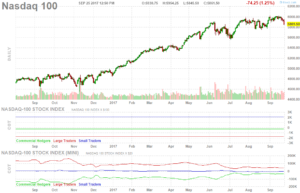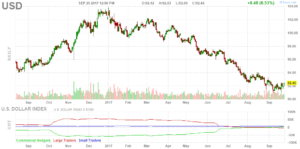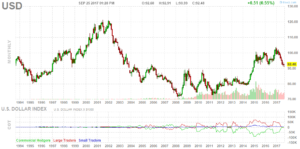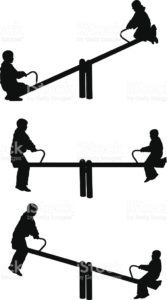It is September, and that means Back to School! Actually, more often than not now, August is Back to School month. My son just started his Fall semester at his University. If your child is still in K-12 and going to public school, then how to pay for it is not yet an issue. If your child is in private K-12 or is in college, then you may have a big issue on your hands, which is, How do I Pay For This?
Daunting
One of the most daunting thoughts that young parents have is, how much do I have to save every month so that my new child can go to college? Sophisticated young parents can do a present value calculation to come up with that figure. Less sophisticated parents can just do simple division, and that will get pretty close to the figure needed. Private college costs upward of $65,000 per year. State college costs less, but still a lot. Community college – not so bad. Recent statistics I have seen show that the college inflation rate has been leveling out for the last few years – at least some good news! My CFP training would have practice problems such as the following:
- Bill and Sue want to know how much per month they need to save for their 2-year-old daughter Ginny’s college education. Bill and Sue met at a private Ivy League college which currently costs $64,000 per year, and they want Ginny to go to the same college. College costs will increase 3% per year, and they think they can make 8% annualized on their investments toward college. Assuming Ginny enrolls at the college at Age 18, how much will Bill and Sue have to save per month so that they have enough month saved to pay for all 4 years when Ginny enrolls as a Freshman?
The answer to the above practice problem is approximately $1,031 per month. That’s a lot of money, and that’s only for 1 child. Bill and Sue start saving when Ginny is only 2 years old. Many, if not most, parents don’t get started that early. However, there are some mitigating factors, such as:
- Most students (or their parents) don’t pay the sticker price. Colleges do offer need-based or even merit-based aid. However, parents can’t plan for that when they get started with their savings plan.
- Most parents don’t have 100% of the money saved by Day 1 when they drop their child off at their college dorm.
- In-state tuition costs at state universities can be much less. However, because of this, the top state universities are becoming harder and harder to get in to. I live in California, which has 9 UC campuses. Of those 9 UC’s, 6 have a median high school GPA of 4.0 for entering freshmen. Other states have similar statistics.
Don’t Despair
A big concern for the financial planner is that the client will do that calculation and decide that it is so much money and conclude, why should I even bother to try to save? That is the worst thing that can happen. Any savings at all will help to pay for college, even if it is not 100% of the cost. Instead of despair, think of the pride you will feel when you see your child walk across the stage at their Commencement Ceremony to receive their diploma. That future sense of pride should be your motivation to save.
Loans
There are many loan programs available for college. Most of these entail filling out a FAFSA form and working through the college to get your loan program set for you. All of these require that the student and/or the parent pay back the lender after college. Some of these student loans accrue interest even when the student is in college. Contact me if you want to know more in-depth about the various loan programs. Loans can’t be avoided in most cases, but perhaps they can be minimized with good planning.
IMO
Do anything you can to avoid loans and avoid putting yourself or your child/student into debt as a student. There are other ways to “skin a cat”, some of which are non-traditional or indirect ways of paying for college. Stick with this blog and I will discuss some alternative ways to pay for college in future blog posts.
PS: Judging by all of the cat videos posted on social media, the US is more and more a nation of cat lovers. It would follow that the expression “skin a cat” may be falling out of favor. However, “skin a cat” as an expression may not have originated as you might logically conclude. The expression may have originated from a boy’s gymnast-style maneuver he can perform while up in a tree. Let’s see what the politically-correct warriors do with this as cat videos increase in number.







